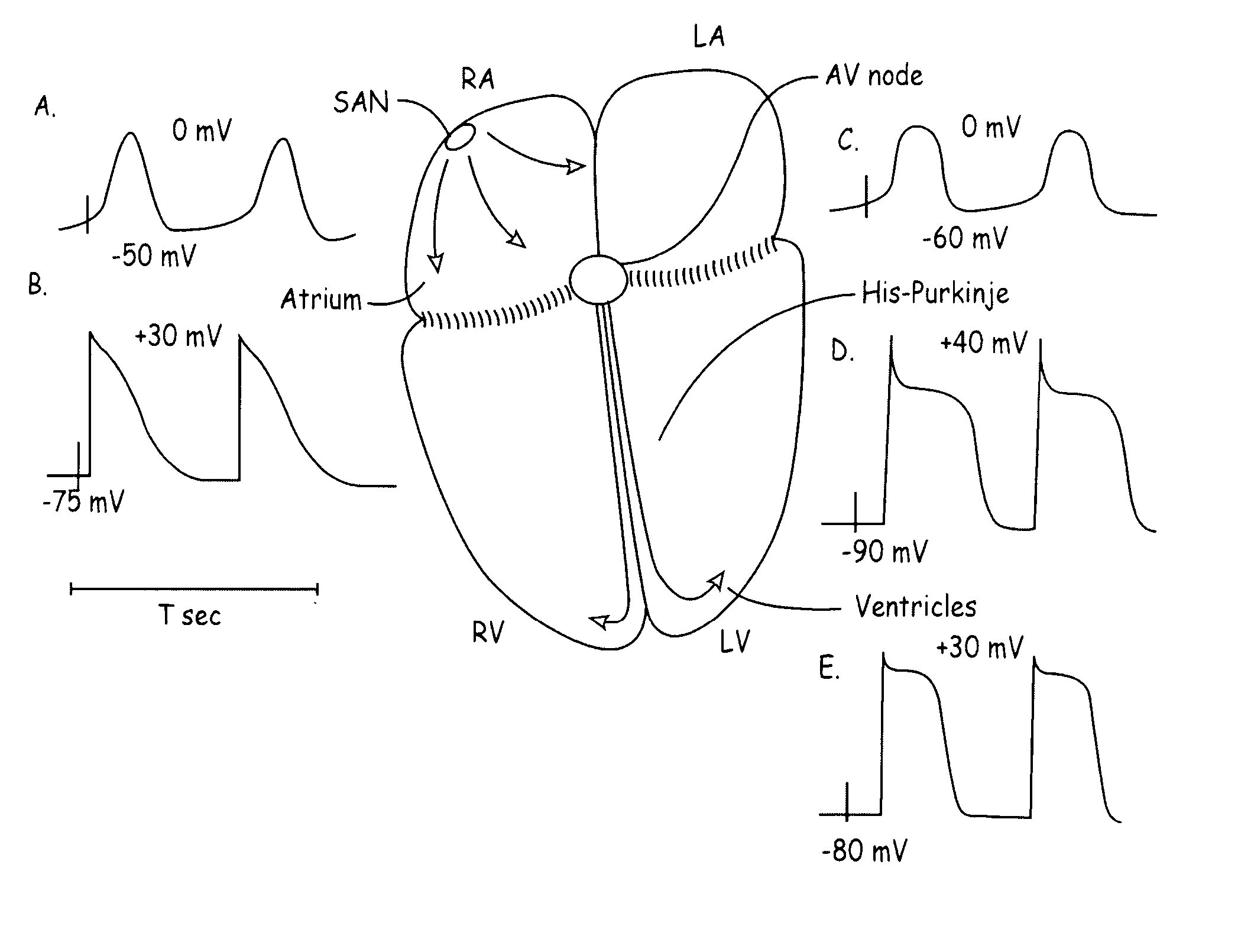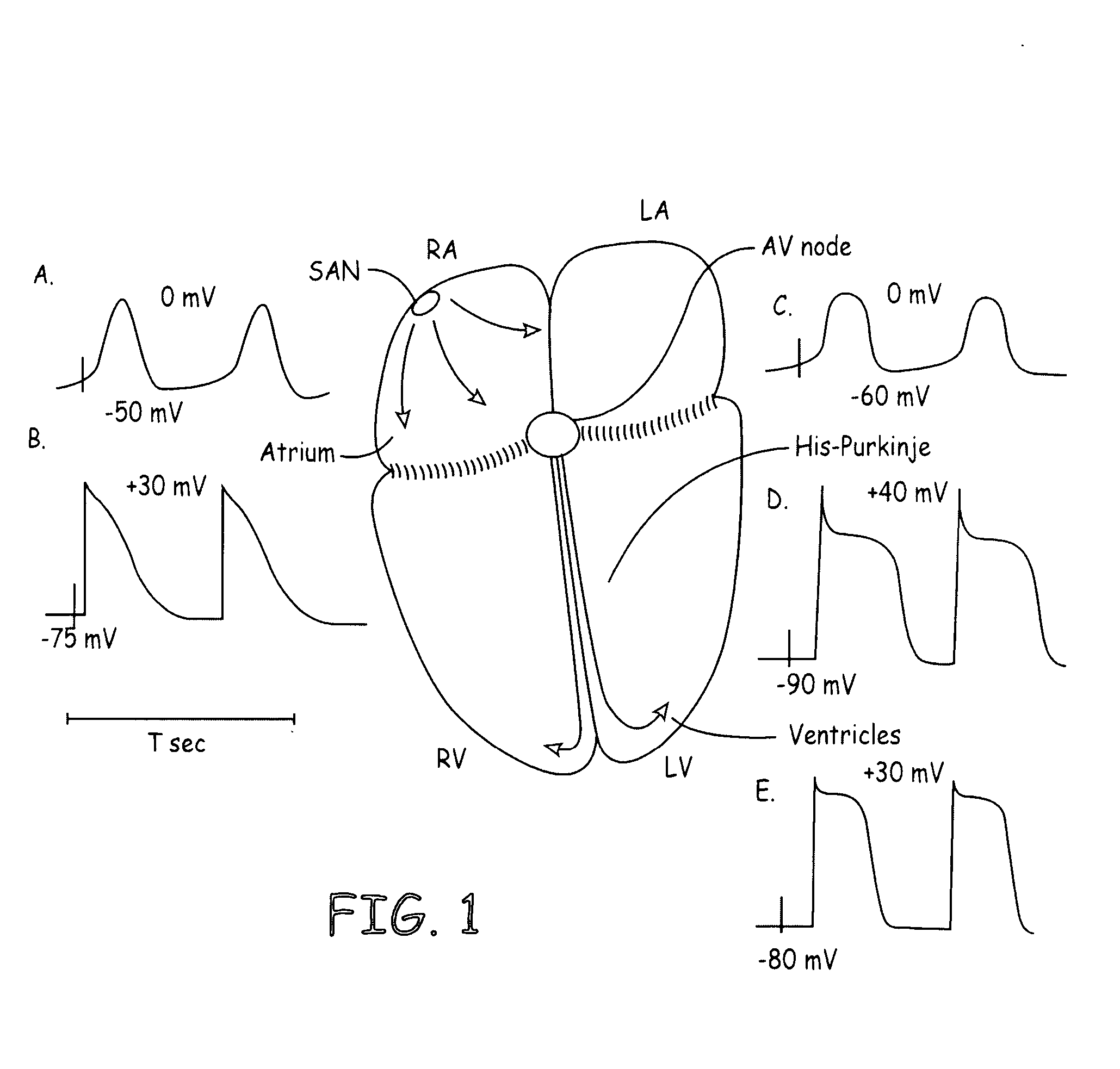Rate control during AF using cellular intervention to modulate AV node
a node and av node technology, applied in the field of cardiac arrhythmia control, can solve the problems of inability to restore the normal condition of the damaged conduction cellular structure, the inability to source current, and the increased electrotonic load on the av node cells, so as to reduce the overall macroscopic conduction, reduce the cell-to-cell conduction, and increase the electrotonic load on each av nodal cell.
- Summary
- Abstract
- Description
- Claims
- Application Information
AI Technical Summary
Benefits of technology
Problems solved by technology
Method used
Image
Examples
Embodiment Construction
[0027] The following detailed description of the invention is merely exemplary and is not intended to limit the invention or the application and uses of the invention. Further, there is no intention to be bound by any theory presented in the preceding background of the invention or the following detailed description of the drawings.
[0028] While the present invention is disclosed with reference to the AV node and specific channels it should be noted that other channels may be equivalently used and conduction systems such as the His Bundle and the Purkinje fibers may be modulated using the same or equivalent method and apparatus.
[0029] Referring to FIG. 1, the four chambers of the heart and the various electrophysiological characteristics are shown. Specifically, the action potentials at the SA node, the AV node and His-Purkinje are shown. As can be seen the various regions of the heart have differing action potentials in both profiles and magnitude. Understanding these electrophysi...
PUM
| Property | Measurement | Unit |
|---|---|---|
| Current | aaaaa | aaaaa |
| Electric potential / voltage | aaaaa | aaaaa |
| Stability | aaaaa | aaaaa |
Abstract
Description
Claims
Application Information
 Login to View More
Login to View More - R&D
- Intellectual Property
- Life Sciences
- Materials
- Tech Scout
- Unparalleled Data Quality
- Higher Quality Content
- 60% Fewer Hallucinations
Browse by: Latest US Patents, China's latest patents, Technical Efficacy Thesaurus, Application Domain, Technology Topic, Popular Technical Reports.
© 2025 PatSnap. All rights reserved.Legal|Privacy policy|Modern Slavery Act Transparency Statement|Sitemap|About US| Contact US: help@patsnap.com



